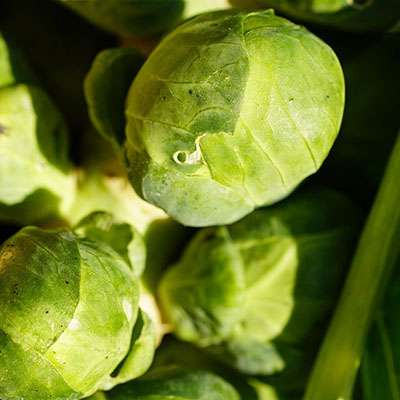Weather and climate conditions this week in Wisconsin
Here are this week’s take-home points about the weather. Scroll down for the full downloadable report.

Current Wisconsin weather and climate conditions
- Temperatures were within 1-2°F of normal last week for most of WI. The southern region was 1-4°F below normal, with conditions closer to seasonal in the north. This wrapped up an October that was one of the top 20 warmest Octobers of all-time in WI.
- Rainfall totals were 0.25” or less across most of WI last week, which is low for this time of year. This wrapped up an October that was one of the drier Octobers on record (25-70% of normal for most).
Impact
- Soil moisture levels at 4” depth showed little to no change across UW research farm stations (Wisconet), with satellite-based products indicating that the north and east remain the driest areas of the state in the top 1 meter of soil.
- Drought expanded across the north last week, with a >20% increase in D1 coverage and the addition of D2 in Douglas County.
- NASS crop progress reports are unavailable this week due to the federal government shutdown.
Outlook for Wisconsin weather and climate
- The best chances for precip over the next 7 days are in the south and far north, some of which could fall as snow.
- Climate probabilities for Mid-November indicate a strong lean (50-70% odds) towards above normal temps, with a slight lean towards above normal precip.
- The outlooks for the month of November (updated on 10/31) indicate a statewide lean towards above normal temperatures (40-50% odds) with uncertainty for precip. Early winter outlooks show a slight lean towards above normal precipitation.
Agronomic considerations
- Field Work and Conditions
- Check cover crop growth as rain has been variable
- After crop harvest is an ideal time to take soil samples and plan ahead for next year’s crop nutrient needs.
- Fall lime applications can be made to adjust pH if indicated values by a soil test are not favorable for a future crop.
- Manure Applications
- Reminder of Wisconsin’s NR 151 Runoff Rules with the timing of manure spreading and current runoff levels. Check DATCP Runoff Risk Advisory Forecast.
- Fall is a great time to have manure samples analyzed for nutrient content before spreading. Here is a list of Wisconsin certified labs.
- As you conduct fall spreading, keeping field records is important to estimate nutrient credits for next year’s crop and avoid over-application. A2809 can provide guidance on these nutrient estimates.
- Pest Management
- In order to prevent weed seed spread from field to field, combine cleaning is essential for reducing seed travel between fields. There have also been many combine fires this year. Keeping combines clean will help minimize risk.
- If you have ear rots present in your corn fields, prioritize harvesting diseased grain first and dry quickly. Read how to manage mycotoxins in storage.
- Forage Management
- After corn is harvested, you may consider grazing corn stalks or harvesting corn stover, based on livestock needs.
- Specialty crops- Fruit
- Fall Sanitation: Clean up weeds around trees and vines, mow aisles to allow for better light penetration to aid in decomposition of leaf/plant material.
- Fall Sanitation: After leaf drop, chop, compost, remove or burn (where permitted) fallen leaf and plant material to limit potential for disease inoculum and any overwintering pests.
- Remember to note observable fruit damage at harvest to make adjustments in next year’s pest management plan.
- Wisconsin fruit growers can reference the Midwest Fruit Pest Management Guide (MFPMG) for a list of registered products and recommended best practices. View the MFPMG Online or order a hard copy here: MFPMG Hard Copy.
- Reminder: Always read and follow directions on the label and keep in mind pre-harvest intervals (PHI) as we move through harvest!
- Specialty Crops- Vegetables
- Winterizing your irrigation system can help save you from costly repairs next season. Whether you use drip irrigation or center pivot systems, this resource includes a great check list for shutting down your system for the year.
- Fall is a great time to test your soil as it gives you more time to make management decisions based on your results. Although remember to make accurate comparisons over time it is important to test at the same time of year each time. A list of certified labs can be found here.
- There are still a few weeks left to establish a winter rye cover crop across the state. Rye has many potential benefits including prevention of erosion and holding nutrients in the soil, but keep in mind that cover crop benefits are strongly related to biomass. Knowing the planting window for your county can help you predict the amount of biomass and thus the likely cover crop benefits. If you are planting towards the end of the window, it is recommended to increase seeding rate to achieve more biomass. More management suggestions can be found here.
- Pest management for next year’s crops starts this fall as many insects and diseases overwinter on crop residue. Residue management (either removing or tilling in residue) can help reduce next year’s pest and disease pressure. Additional info can be found here.
- Aphids are a common high tunnel pest on fall and winter greens. The common species in high tunnels- green peach aphid, potato aphid, and fox glove aphid– are able to survive temperatures as low as 5°F. Population control will only become more difficult as temperatures drop so make sure to monitor and, when necessary, manage aphids this fall. Management options include the release of lady beetles, insecticides, and weed management to reduce alternative hosts.
If you would like to obtain a PowerPoint copy of this report, please email anastasia.kurth@wisc.edu.




